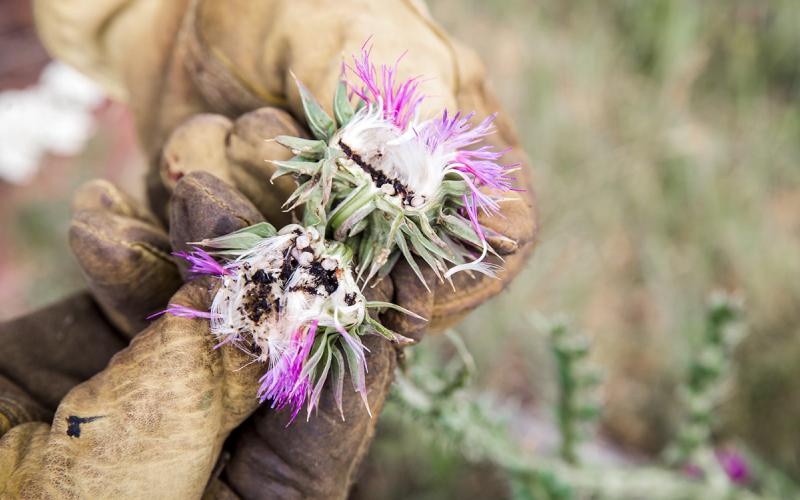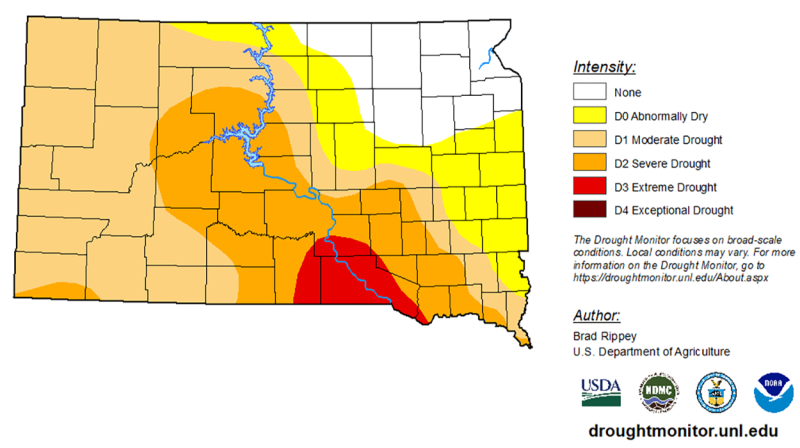
Written with contributions by Shelby Pritchard, former SDSU Extension Pest Management Specialist.
Originally Submitted: April 28, 2022
The spring conditions we are experiencing in 2022 are fairly similar to those of 2021. Most of South Dakota is facing some level of drought conditions (Figure 1). Grasshoppers caused issues in some areas of South Dakota during the spring of 2021 with early-season crop destruction, and it is likely that they will be an issue again in 2022.
Large grasshopper populations may cause economic loss in cash crops and reduce forage in range and pasture lands. Drought conditions exacerbate the grasshopper issue, as this pest will seek any plant material that is green during the growing season.
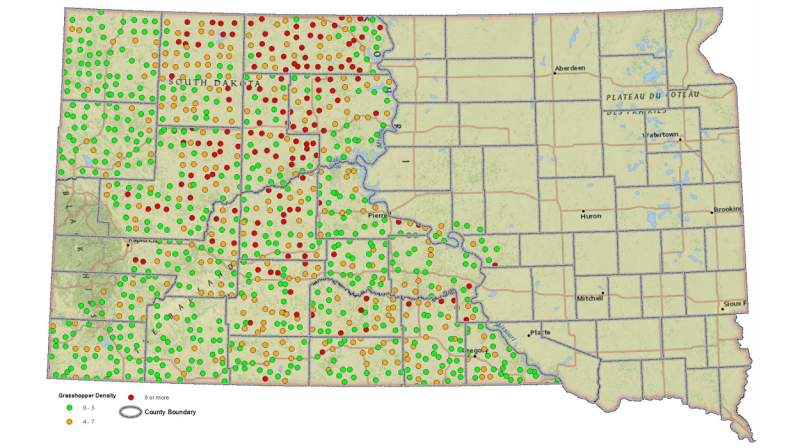
In 2021, there were large populations of grasshoppers that caused issues in central and western South Dakota. For this reason, grasshopper populations could be a more serious issue in those areas in 2022. The 2021 U.S. Department of Agriculture (USDA) Adult Grasshopper Survey of central and western South Dakota indicated several areas that had grasshopper populations that were above the threshold of eight grasshoppers per square yard (Figure 2). There were also many areas that were approaching the threshold. This data suggests that grasshopper populations could be high in those areas during the 2022 growing season.
Identification
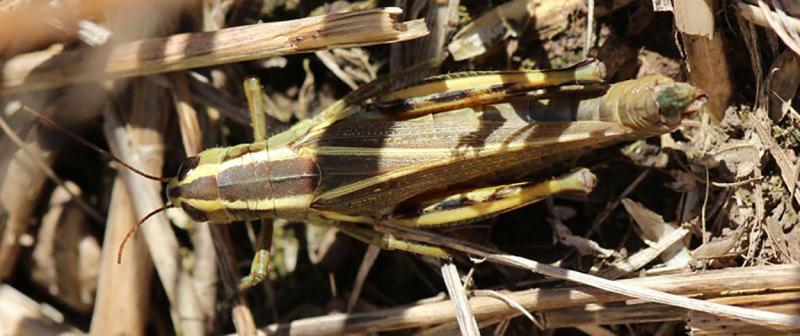
Two-Striped Grasshopper
There are three main species of grasshoppers that are being reported in the areas with large grasshopper populations. Of these three species, the most common is the two-striped grasshopper (Figure 3). These grasshoppers get their name because of the two light-yellow lines that run on the back of their head to their abdomen, where they converge near the middle of the wings. Two-striped grasshoppers are normally tan to brown in color. They are approximately 1 to 1.5 inches long.
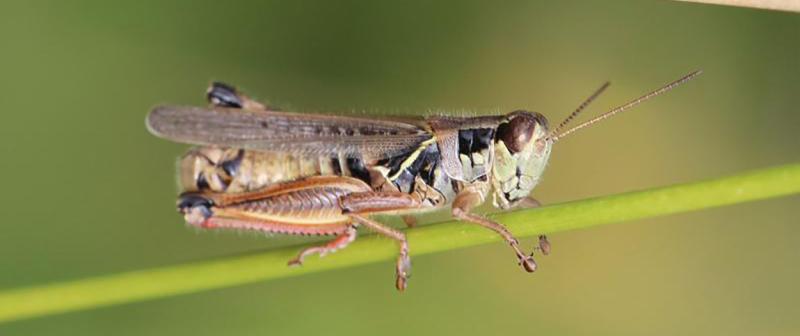
Redlegged Grasshopper
Another grasshopper that has been reported is the redlegged grasshopper. These grasshoppers get their name from their red hind leg segment (Figure 4). Their bodies range in color from green to tan with black markings, and they are 2/3 to 1 inch long.
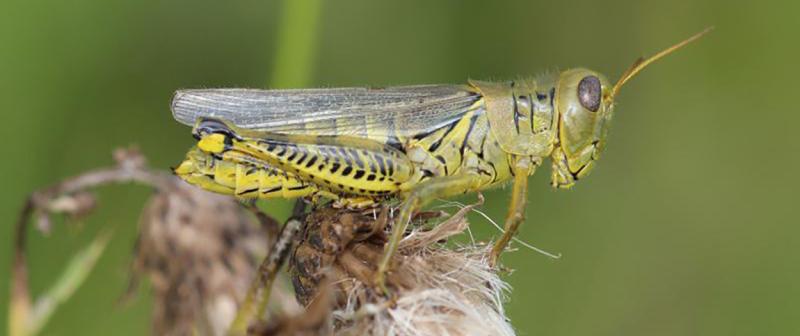
Differential Grasshopper
The other large grasshoppers that are being reported are the differential grasshoppers. These vary in size from 1 1/8 to 1 ½ inches long. Their bodies are green to yellow in color, and they have black chevron markings on their hind legs (Figure 5).
Scouting and Management Options

The two methods for determining if populations are at or above threshold are to use visual counts or a sweep net. For visual counts, estimate a square yard in front of you and count the number of grasshoppers jumping out of the area as you slowly walk towards it. For sweep netting, use a 15-inch diameter sweep net and capture grasshoppers in four pendulum swings (approximately one square yard of area) and count them. With either sampling method, we recommend repeating it several times in a pattern, such as the example in Figure 6, and calculating the average for increased accuracy.
The threshold for grasshopper populations that was established by the USDA for grasslands is 15 to 20 nymphs or 8 to 10 adults per square yard.
For crops, we recommend scouting for nymphs and adults, both in field margins and within the fields. For field margins, management should be considered when nymph populations reach 50 to 75 per square yard and adult populations reach 21 to 40 per square yard. In the field, management should be considered when there are 30 to 45 nymphs per square yard or when there are 8 to 14 adults per square yard. If you observe silk feeding, or grasshoppers feeding on ear tips or developing kernels, insecticide management should be considered. For soybean, if grasshoppers cause 20% defoliation after flowering or are feeding on developing pods, insecticide management should be considered.
If thresholds are exceeded, an insecticide that is labeled for grasshopper management may be considered. A current list of insecticide sprays for use in soybean, corn and alfalfa can be found in the most-recent South Dakota Pest Management Guides.
In pastures and range, spreading poison grasshopper baits or baits containing Nosema locusta spores may be used to reduce populations. If treating earlier in the season while grasshoppers are still growing, an insect growth regulator (IGR) containing diflubenzuron may be applied to inhibit grasshopper development. However, please note that IGRs have no effect on adult grasshoppers and should only be used to manage developing nymphs.
It’s also important to remember that large grasshopper populations can lead to increased populations of blister beetles during the following season. Areas that experienced increased grasshopper pressure in 2021 should be monitored for increased blister beetle activity, especially in alfalfa fields.
